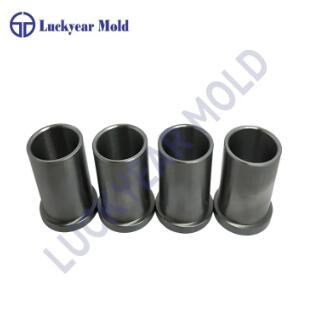Overcoming Manufacturing Challenges in Press Die Mold Components
2024-07-25
Introduction
The manufacturing of press die mold components is a sophisticated process that requires precision, high-quality materials, and advanced techniques. Despite advancements in technology, several challenges still persist in the industry. In this blog, we will delve into the common challenges faced during the manufacturing of press die mold components and explore effective strategies to overcome them.
Complex Geometries
Press die mold components often feature complex geometries and intricate designs, making the manufacturing process highly challenging. Achieving the desired shape with high precision requires advanced machinery and skilled operators.
Solution: Utilizing 5-axis CNC machining and EDM techniques can help in accurately manufacturing complex geometries. Employing CAD/CAM software for design and simulation can also ensure that the components are produced to exact specifications. Continuous training and skill development for operators are essential to handle advanced machinery effectively.
Surface Finish
Achieving a high-quality surface finish is crucial for press die mold components, as it directly affects the performance and lifespan of the molds. Poor surface finish can lead to issues such as increased friction, wear, and material sticking.
Solution: Implementing advanced finishing techniques such as polishing, grinding, and superfinishing can significantly improve the surface quality. Using high-quality cutting tools and maintaining optimal cutting parameters during machining also contribute to better surface finish. Regular inspection and quality control ensure that the surface finish meets the required standards.
Dimensional Tolerances
Maintaining tight dimensional tolerances is critical in the manufacturing of press die mold components. Even slight deviations can lead to assembly issues and affect the overall performance of the mold.
Solution: Precision machining techniques, such as CNC machining and EDM, along with advanced measuring instruments like CMM (Coordinate Measuring Machines), can help achieve tight tolerances. Implementing Statistical Process Control (SPC) can monitor and control the manufacturing process, ensuring consistent dimensional accuracy.
Thermal Management
Press die mold components are often subjected to high temperatures during the molding process. Efficient thermal management is essential to prevent thermal expansion, distortion, and other heat-related issues.
Solution: Using materials with high thermal conductivity and stability can help manage heat effectively. Incorporating cooling channels and thermal barriers within the mold design can also aid in efficient heat dissipation. Regular thermal analysis and simulations can identify potential thermal issues and guide design improvements.
Tool Wear
Tool wear is a significant challenge in the manufacturing process, leading to decreased precision, poor surface finish, and increased production costs. Frequent tool changes and maintenance can also cause downtime and reduce productivity.
Solution: Selecting high-quality, wear-resistant tools and applying appropriate coatings can extend tool life. Implementing tool condition monitoring systems can detect wear early and schedule timely replacements. Optimizing machining parameters, such as cutting speed, feed rate, and depth of cut, can also minimize tool wear.
Lead Time Reduction
Reducing lead time while maintaining high quality is a constant challenge in the manufacturing industry. Meeting tight deadlines without compromising on precision and quality requires efficient production planning and management.
Solution: Adopting lean manufacturing principles and optimizing workflow can reduce lead time. Implementing automation and robotics in the manufacturing process can increase efficiency and consistency. Collaborating closely with suppliers and maintaining a robust supply chain can also help in timely delivery of materials and components.
Conclusion
The manufacturing of press die mold components is fraught with challenges, from handling complex geometries and achieving tight tolerances to managing heat and tool wear. By leveraging advanced technologies, adopting efficient manufacturing practices, and continuously improving processes, manufacturers can overcome these challenges and produce high-quality components. Staying ahead in this competitive industry requires a commitment to innovation, quality, and precision in every aspect of the manufacturing process.



